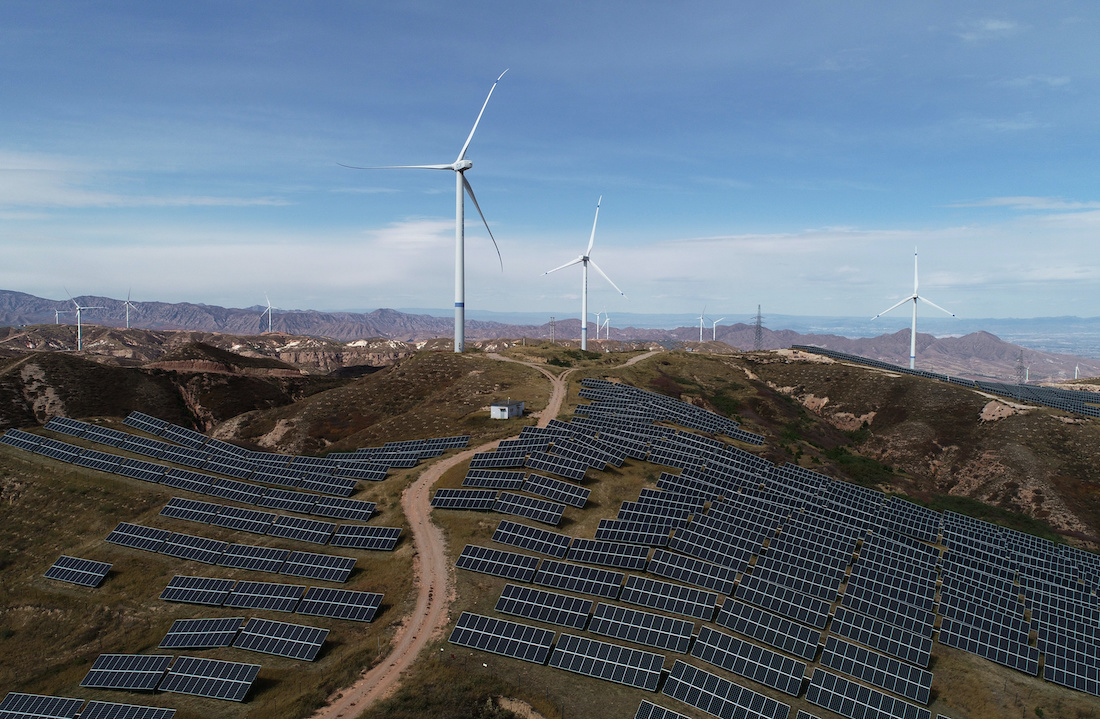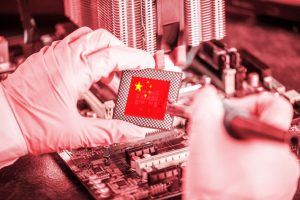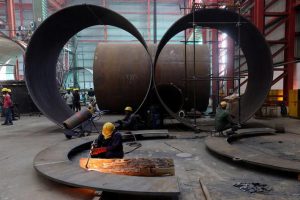China is likely to spend around $675 billion on clean energy technologies in 2024, an investment that will be nearly as much as that of the United States and Europe combined, according to estimates from the International Energy Agency.
The investment will mean that China will account for the largest share of clean energy investment in 2024, a new IEA report says.
Meanwhile, Europe will spend an estimated $370 billion on clean energy investments, while the US will spend $315 billion, the report said.
Also on AF: China Turns on World’s Biggest Solar Farm in Xinjiang
The clean energy sector was the biggest driver of China’s economic growth in 2023, contributing 40% of its expansion. Beijing spent $890 billion in renewable energy infrastructure last year — an amount that almost equalled global fossil fuel investments for the period.
Clean technologies include renewables, electric vehicles, nuclear power, grids, storage, low-emissions fuels, heat pumps and energy efficiency improvements. The sector accounted for 9.0% of China’s GDP in 2023.
China’s rapid expansion of its clean tech industry has been amplified by an ongoing slowdown in the country’s crisis-hit property sector — once one of the biggest contributors to the economy.
For this year, Beijing’s spending on the industry will primarily be driven by demand in three industries — solar, lithium batteries and electric vehicles — IEA said, noting that those industries saw a 30% jump in exports in 2023.
The largest portion of China’s investments will go towards low-emission power, IEA said.
The projections come at a time when the US and Europe have been increasingly raising the alarm over China’s industrial “overcapacity”, especially in the manufacture of clean energy technologies such as solar power equipment and electric vehicles.
Both economies allege that China is flooding their markets with cheap products and threatening the survival of local manufacturers — charges Beijing shrugs off as “trade protectionism”.
Starting this month, the US has also increased tariffs on imports of electric cars and solar cells from China.
Massive lead for solar energy
The IEA report also noted that global spending on clean energy technologies and infrastructure was set to hit $2 trillion this year.
“For every dollar going to fossil fuels today, almost two dollars are invested in clean energy,” IEA Executive Director Fatih Birol said.
The biggest gainer in the sector has been solar energy. “More money is now going into solar PV than all other electricity generation technologies combined,” the IEA report said.
A major driver of solar investments has been the steep plunge in prices of solar panels — driven by a flood of supply from China. Global prices of solar modules have nearly halved over the past year, with Chinese manufacturers accounting for more than 70% of global production.
Manufacturers in China, meanwhile, have managed to significantly bump up supplies thanks to much lower costs than their global rivals. Billions of dollars worth of state funding has meant that manufacturing a solar panel in China costs just 15 cents per watt — more than 60% cheaper than the US and half the cost seen in Europe.
The resulting jump in Chinese solar exports has forced European producers to shut up shop and seek help from policymakers.
View this post on Instagram
Emerging economies still on back foot
The IEA report also went on to note that despite global advances, emerging and developing economies outside of China had major shortfalls in energy investment. These economies currently account for only about 15% of global clean energy spending, IEA said.
The biggest barrier to clean energy investment in emerging and developing economies was the high cost of capital, IEA said. Financing costs in these regions were at least twice as high as in advanced economies and China, it added.
But aside from China, India was also a key outlier in clean energy investment.
India’s spending on clean energy reached $68 billion in 2023, up by nearly 40% from the 2016-2020 average, IEA noted. Almost half of those investments were in low-emissions power generation, including solar PV, it said.
The country’s clean energy investment is on track to double by 2030, the report added.
- Vishakha Saxena
Also read:
China Plans New Way to Measure Products’ Carbon Footprint
China Wind, Solar Capacity Set to Outstrip Coal For First Time
China’s Solar Sector Seen Facing Years of Oversupply, Low Prices
US, EU Can’t Meet Climate Goals Without China’s Cheap Green Tech
EU Can’t Close Borders to Chinese Solar, Energy Chief Says
China’s Cheap Solar Panels Killing Europe’s Solar Manufacturers
Xinjiang Goods Ban to Spur Big Drop in US Solar Installations
Raimondo Says Chinese EVs Are a National Security Risk For US, EU
China Moves to Integrate EV Charging to National Power Grids
China Solar Firms Paying Price of Global Dominance – FT
























